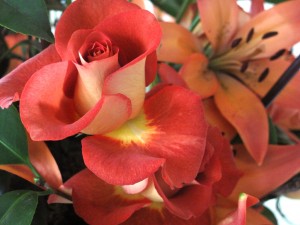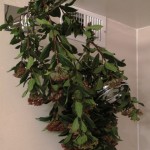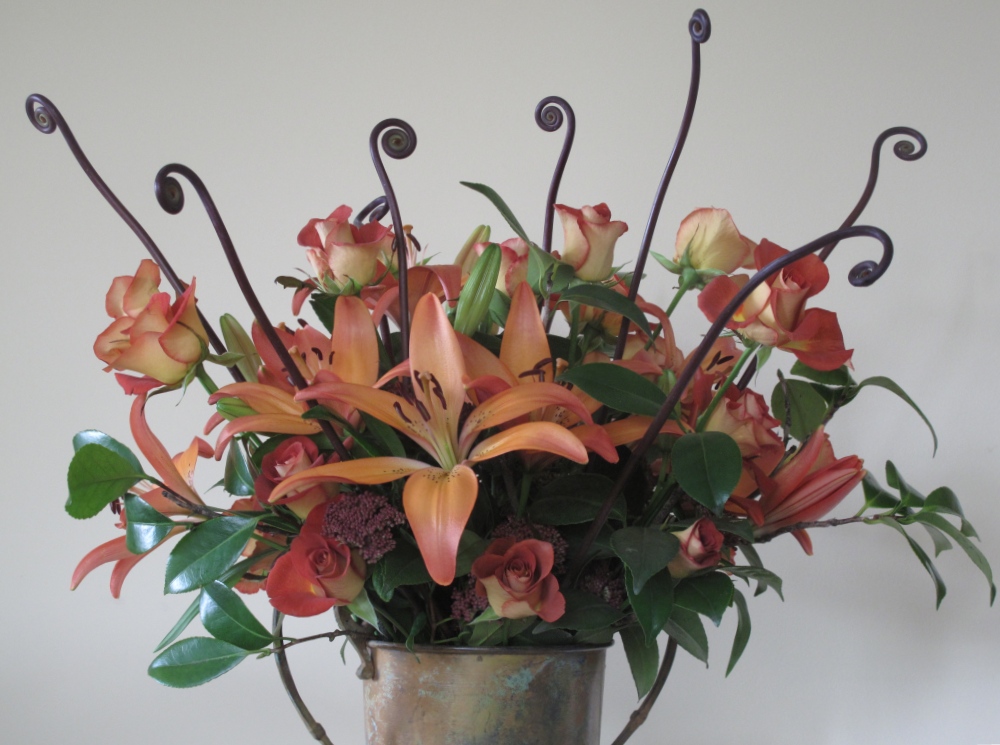Do-over with my February Flowers
February 13th, 2013
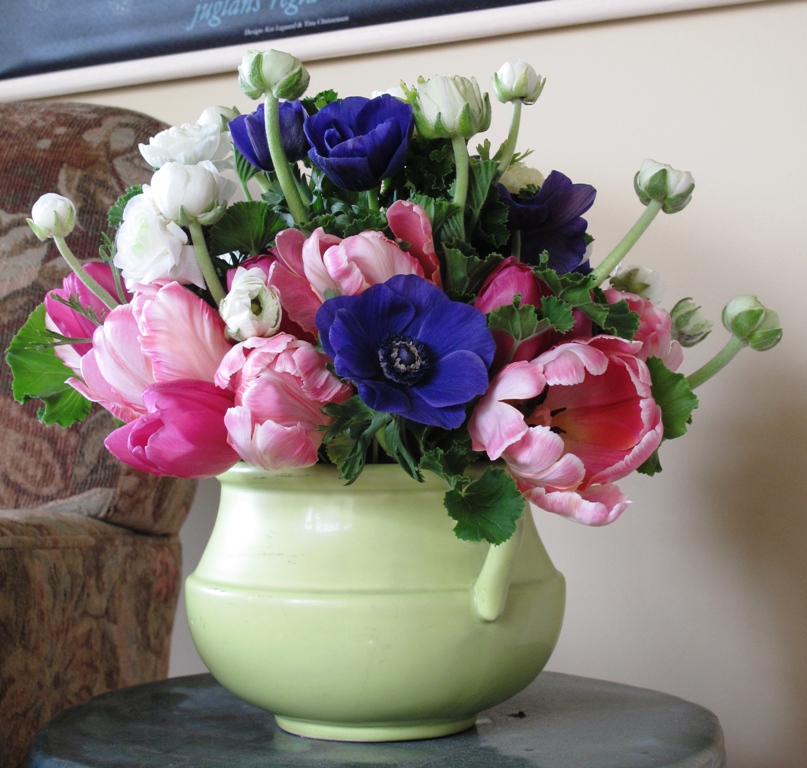
SPRING: Two types of pink tulips, Oregon grown; plus pelargonium foliage, white ranunculus & deep purple-blue anemones from California
I came home Sunday from a weekend in Portland, where I lectured about “Slow Flowers” and demonstrated eco-floral design techniques at the Yard, Garden and Patio Show. It was a great way to kick off the 2013 flower & garden show season, thanks to the very warm and supportive welcome of the Portland community.
I enjoyed a very special treat because some longtime family friends, including Donna Davey and her husband Bill Davey came to the event. In 1984, Donna designed the flowers for Bruce’s and my wedding. Pretty amazing for both Donna and me to reminisce about her influence on me . . . 28-plus years later! The bridal bouquet she designed used gardenias and I will always associate that wonderful fragrance with our marriage.
Live demos always have their surprises and this one was no different. My tulips had very floppy stems and they did not cooperate. It was my intention to recreate the bouquet on the cover of Slow Flowers, but the tulips I procured from a local Oregon grower the day before didn’t play nicely with my scheme.
BOUQUET ONE:
They are certainly gorgeous flowers, but as you can see…these tulips seem much happier with their stems cut short so their flower heads practically rest on the vase’s rim. I ended up salvaging the ingredients in my garage yesterday afternoon after the flowers traveled home from Portland in the back of my car. I used a half-dome flower frog in the base of the urn along with a chicken-wire cage that filled the opening (just below the rim).
Together, these two stabilizing elements hold the flowers in place – much, much more successful than my efforts in front of an audience (of course – isn’t that how it always goes?). The green pelargonium foliage added a layer of texture through which the anemone and ranunculus stems could be placed. Notice how they all stand upright, even though the tulips couldn’t do that!
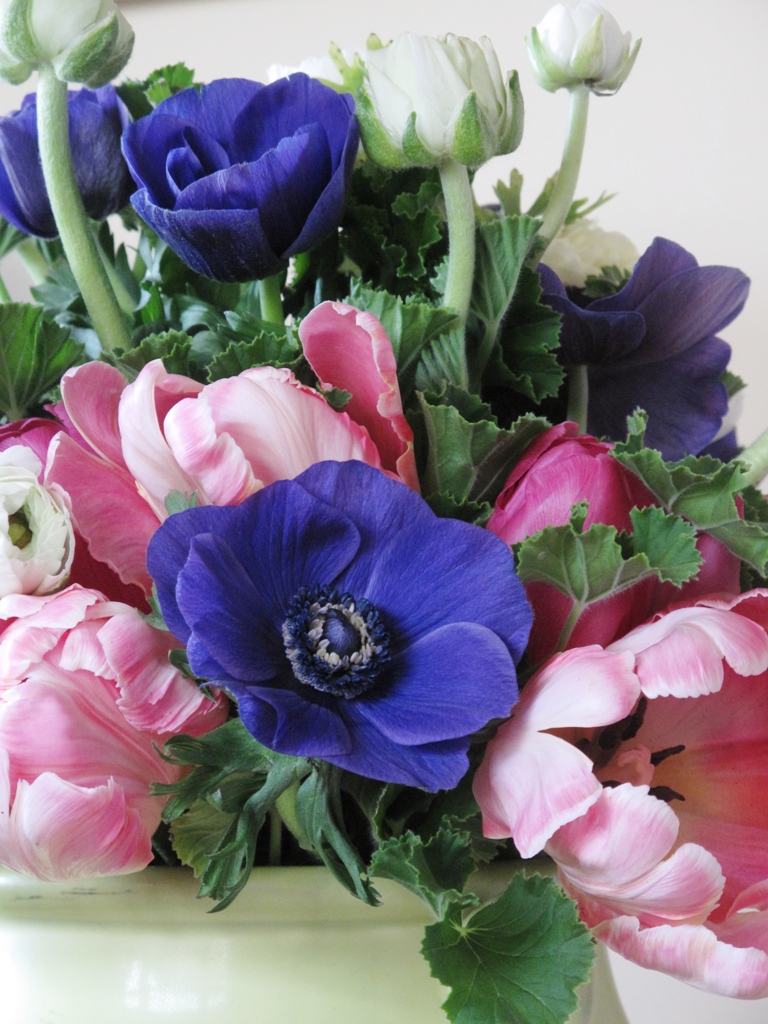
Pink parrot tulips, dark pink garden tulips and yummy purple-blue anemones are happily nestled together
BOUQUET TWO:
This lovely bouquet was inspired by the Leonidas roses that Sandra Peterkort Laubenthal of Peterkort Roses gifted me when I visited her stall at the Oregon Flower Growers market. An enticing combination of terra cotta and apricot, this rose is such a refreshing alternative to RED and BURGUNDY roses that you see everywhere these days. The color palette determined everything else I selected for the bouquet, including some pale terra cotta-hued lilies, also from Peterkort’s greenhouses.
For greenery, I started with some viburnum branches, just about to flower. I love how the dark maroon-pink stems and tight buds on the floret picked up the darker edges of the rose petals.
A couple of things went wrong with the initial bouquet – the one I made in Portland. First of all, that viburnum was also floppy. The flower heads, that is. Lorene Edwards Forkner, my roommate and a very talented plantswoman who knows her stuff, suggested I give the woody branches a deep-soak in our hotel’s bathtub. This drenching method can sometimes revive wilting flowers (it’s known to work with hydrangeas, for example).
Here’s how things looked after I soaked the viburnum…I had to hang the branches upside down on the shower head to get them to dry off!
Slightly revived, the branches were still not substantial enough to handle the scale of my weathered metal urn. I forged ahead, starting with the viburnum as the foliage base; then I added roses and lilies in uneven numbers; also staggering the heights.
As a finishing detail, I added several Hawaii-grown curly fiddlehead ferns. I picked these out when I visited Billingsley Wholesale Florist in Portland.
When I decided to re-work this bouquet, I focused on what bothered me about it: The foliage volume. It was too wimpy. There in my bucket was a huge bunch of camellia foliage. I love the glossy finish and the large leaves. OKAY! Sometimes the answer is right under my nose!
So I took apart the entire bouquet and started over. First: Add all the camellia branches, stripping off any leaves that might be under water. Second: Insert the viburnum branches, arranging them in and around the camellia.
Now my foliage volume was substantial enough to handle the dramatic roses and lilies. Those flowers play nicely together, with the same hues, but totally different petal shapes. Finally, a few of my “exclamation points” – the Hawaiian ferns.
Now that’s better. I hope that my next demonstration gains momentum from the lessons I learned this time around. If something isn’t working, it’s okay to admit defeat and START OVER!









